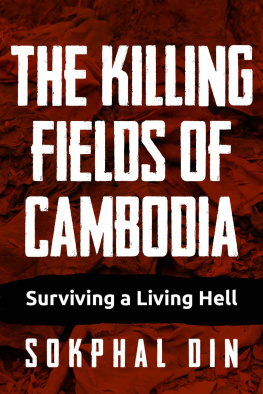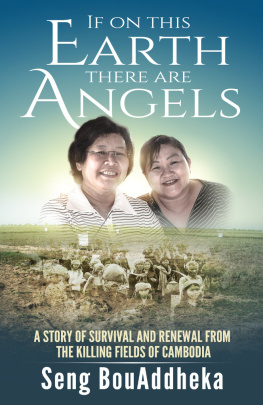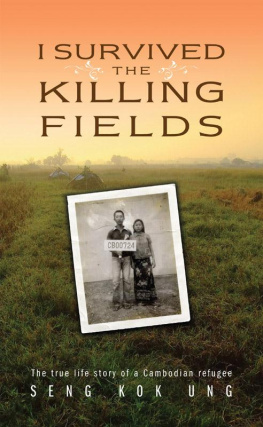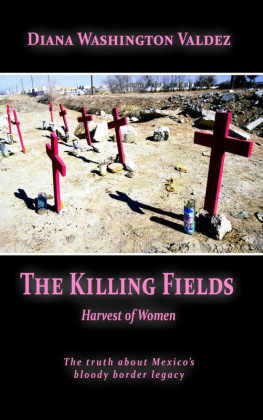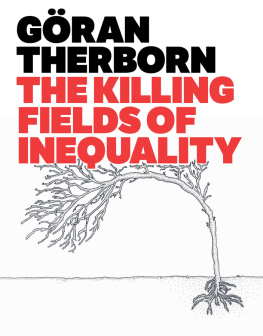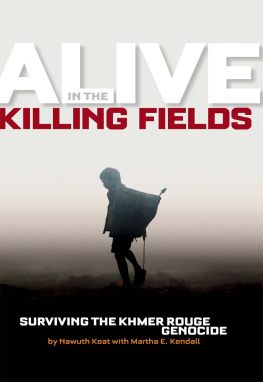Sokphal Din - The Killing Fields of Cambodia: Surviving a Living Hell
Here you can read online Sokphal Din - The Killing Fields of Cambodia: Surviving a Living Hell full text of the book (entire story) in english for free. Download pdf and epub, get meaning, cover and reviews about this ebook. year: 2020, publisher: Amsterdam Publishers, genre: Home and family. Description of the work, (preface) as well as reviews are available. Best literature library LitArk.com created for fans of good reading and offers a wide selection of genres:
Romance novel
Science fiction
Adventure
Detective
Science
History
Home and family
Prose
Art
Politics
Computer
Non-fiction
Religion
Business
Children
Humor
Choose a favorite category and find really read worthwhile books. Enjoy immersion in the world of imagination, feel the emotions of the characters or learn something new for yourself, make an fascinating discovery.
- Book:The Killing Fields of Cambodia: Surviving a Living Hell
- Author:
- Publisher:Amsterdam Publishers
- Genre:
- Year:2020
- Rating:3 / 5
- Favourites:Add to favourites
- Your mark:
- 60
- 1
- 2
- 3
- 4
- 5
The Killing Fields of Cambodia: Surviving a Living Hell: summary, description and annotation
We offer to read an annotation, description, summary or preface (depends on what the author of the book "The Killing Fields of Cambodia: Surviving a Living Hell" wrote himself). If you haven't found the necessary information about the book — write in the comments, we will try to find it.
Sokphal Din: author's other books
Who wrote The Killing Fields of Cambodia: Surviving a Living Hell? Find out the surname, the name of the author of the book and a list of all author's works by series.
The Killing Fields of Cambodia: Surviving a Living Hell — read online for free the complete book (whole text) full work
Below is the text of the book, divided by pages. System saving the place of the last page read, allows you to conveniently read the book "The Killing Fields of Cambodia: Surviving a Living Hell" online for free, without having to search again every time where you left off. Put a bookmark, and you can go to the page where you finished reading at any time.
Font size:
Interval:
Bookmark:


ISBN 9789493056749 (ebook)
ISBN 9789493056732 (paperback)
Publisher: Amsterdam Publishers, The Netherlands
Editor: Suzy Thurley
info@amsterdampublishers.com
Copyright Sokphal Din, 2020
All Rights Reserved. No part of this publication may be reproduced or transmitted in any form or by any means, electronic or mechanical, including photocopy, recording or any other information storage and retrieval system.

In memory of my late mother
Mrs Pan Penh You (Naret)
This book is dedicated to my mother, to my relatives and friends who lost their lives in the Killing Fields from 1975 to 1979. At the time mother began to keep a diary, documenting what our family endured in those years. Afterwards, she kept saying to me that I should write our story so that it would never be forgotten. Others told me that it was all in the past, that it was best to move on and forget about it. My perspective on this, however, is clear. It is up to me to honour my mothers wishes by telling the world of our harrowing survival. This is the only legacy that I have.
We should never forget. I lost my brother, father, grandmother and various other members of my family due to executions, starvation, disease and being worked to death in labour camps. After we were forced out of our home in Phnom Penh in 1975, within just two months, my father, four uncles and two of my teenage cousins were taken away by the Khmer Rouge. None of them ever returned.
Some three weeks before my mothers death in 2001, I was leaving her house to spend a weekend away with friends. She stood at the back door as I put on my shoes and said to me, You are my best son. You have been good to me. You have looked after me, your sister and brother. You have provided a house for us to live in, youve never been in debt. You are the best son.
Although I was pleased to hear her words, I also felt embarrassed. And so, I simply listened and continued to put on my shoes in silence.
When she passed away on the 19th of October 2001, I realised that those words were her gift to me. Her diary revealed further gifts and dreams for the family that had been destroyed by the Khmer Rouge regime.
What I will describe in this memoir happened a long time ago in a far-away country, but my memories, like my feelings, have stayed sharp.
I still dream about my family, the jungle, the Killing Fields in Khmer, and the language of my youth. I tried to write about it in English but sometimes my words falter and fail me.
My mothers memory has inspired me to write. Now that I have done so, I hope that she would be proud of me.

Sokphal Din BEM
The Cambodian Civil War was a bloody and intricate affair. Influences from both sides were numerous and far reached. On one side were the government forces and the Khmer Republic who were supported by American aerial bombings and financial aid, and South Vietnams ground troops. On the other side, the Khmer Rouge were supported by North Vietnam, the Viet Cong, and foreign aid from Mao Zedongs Communist Party of China.
After years of violent combat, it was the Khmer Rouge who emerged victorious, with Pol Pot as their leader. A combination of Marxist, Maoist, xenophobic, and nationalist elements, the Khmer Rouges ideology came to fruition. They rounded up city dwellers, so-called new people, and placed us into rural, communal living spaces, or labour camps. We were a symbol of the old regime and were only good to be put to work, re-educated, or eliminated. The rural communities, or base people, were romanticised and it was thought that through sheer human will power and agricultural autarky, Cambodia would become a functioning Communist society.
They installed their ideology through mass extermination, torture, fear, starvation, and monstrous acts. The Killing Fields, now preserved as a memorial site, consist of 127 mass graves containing 20,000 bodies. For me, it was a place where we worked tirelessly in inhumane conditions. It was estimated that between 1.7 and 2.5 million people were killed a quarter of Cambodias population.

Mass graves (Photo credit DC-CAM)
No profit to keep you. No loss to extract you were the painful words that the Khmer Rouge used to insult us. Their words were engraved deep into our memories, we had no value as human beings, we received no compassion or care, and we were in the grasps of their extreme and inhumane power.

* * *
1979. They took me to an abandoned barn. My arms, my wrists were tied behind my back. Hay was scattered in the middle of the barn, and wooden blocks were dispersed on the ground. There were two of them. One was a soldier dressed in full uniform and carrying a pistol on his waist. They ordered me to kneel on the ground.
The questions began.
They asked me about my name and family background. Whatever I answered, they never seemed satisfied. The soldier kicked me each time I delivered an answer that was not to his liking. They took me by the arms and placed me on a wooden block under a beam in the middle of the barn. My wrists were tightly bound behind my back. The soldier tossed the end of the rope up and over the beam and tied it to a pillar. Then he kicked the wooden block away. The pain ripped through me an excruciating, screaming, unbearable pain. My wrists were burning with fire since the whole weight of my body was on them. I could hear my own screams while nearly passing out.
This is what it had come to.
After everything I had been through, it would end here. Memories and images flashed through the pain. Forced from my house at gunpoint by the Khmer Rouge, we were marched into the jungle and left to die, starved, and worked almost to death in the Killing Fields and conscripted into the Khmer Rouge to fight against the Vietnamese.
I had survived almost four years of living hell under Pol Pots regime only to die here. It was like living in a prison without walls.

Remains of victims (Photo credit DC-CAM)
Before.
I remember a cabinet that my father made before we were forced to flee from our house. It was a beautiful mahogany sideboard that he was very proud of. It consisted of two separate compartments and was used to store important documents and precious jewellery. Before we were forced out, my mother put all the photographs of our family, and everything that documented our lives inside. We would come back home in a day or two was what we were told by the Khmer Rouge soldiers. But we never returned, and it was as though my family ceased to exist.
Font size:
Interval:
Bookmark:
Similar books «The Killing Fields of Cambodia: Surviving a Living Hell»
Look at similar books to The Killing Fields of Cambodia: Surviving a Living Hell. We have selected literature similar in name and meaning in the hope of providing readers with more options to find new, interesting, not yet read works.
Discussion, reviews of the book The Killing Fields of Cambodia: Surviving a Living Hell and just readers' own opinions. Leave your comments, write what you think about the work, its meaning or the main characters. Specify what exactly you liked and what you didn't like, and why you think so.

